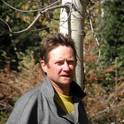Recent reports of rapid die-off of aspen (Populus tremuloides), coupled with vigorous debate over long-term reduction of aspen cover in western North America, has prompted considerable research given the importance of this forest type for economic and non-economic interests. Despite this interest, indicators of aspen conditions are poorly understood, and there is a lack of systematic monitoring of stable aspen landscapes. Stable aspen are defined here as being predominantly aspen overstorey (>80% basal area) with little or no conifer regeneration. We examined a putative stable aspen landscape in southern Utah and addressed (1) stand structure and (2) indicators of decline. We sampled 83 aspen-dominated stands within a 275 km2 landscape using established forest health monitoring protocols. Eighty-four percent of sample stands on Cedar Mountain exhibited stable aspen characteristics. Principal findings include: (1) a relatively uniform age of adults within the study area; (2) approximately 10% crown dieback on half of the plots sampled; (3) roughly 50% of the study plots had greater than 50% of the trees with damage to the bole; (4) about 25% of the adult basal area was dead; and (5) over half the plots had few sub-canopy individuals and/or limited regeneration. Physiographic variables including elevation, slope, and aspect were generally not strong indicators of aspen condition, typically explaining less than 15% of the variation in basal area, mortality, dieback, or damage. Healthy stands were rarely observed in the most drought prone locations, though the inverse was not necessarily true; healthy and unhealthy stands were found in more mesic settings. Principal components analysis identified two clusters of plots that differed considerably in regeneration; however, no other variables differed between these groupings. We suggest exogenous factors such as land-use history or altered disturbance regimes and endogenous factors such as soils and geology influence aspen condition on this landscape. Further research is necessary to test these hypotheses.
Article
Landscape Assessment of a Stable Aspen Community in Southern Utan, USA
Forest Ecology and Management
Document Type
Article
Publication Date
1-1-2010
Disciplines
Abstract
Citation Information
Rogers, Paul C., Leffler, A. Joshua, and Ryel, Ronald J. Landscape assessment of a stable aspen community in southern Utah, USA. Forest Ecology and Management. 259(3)487-495.
